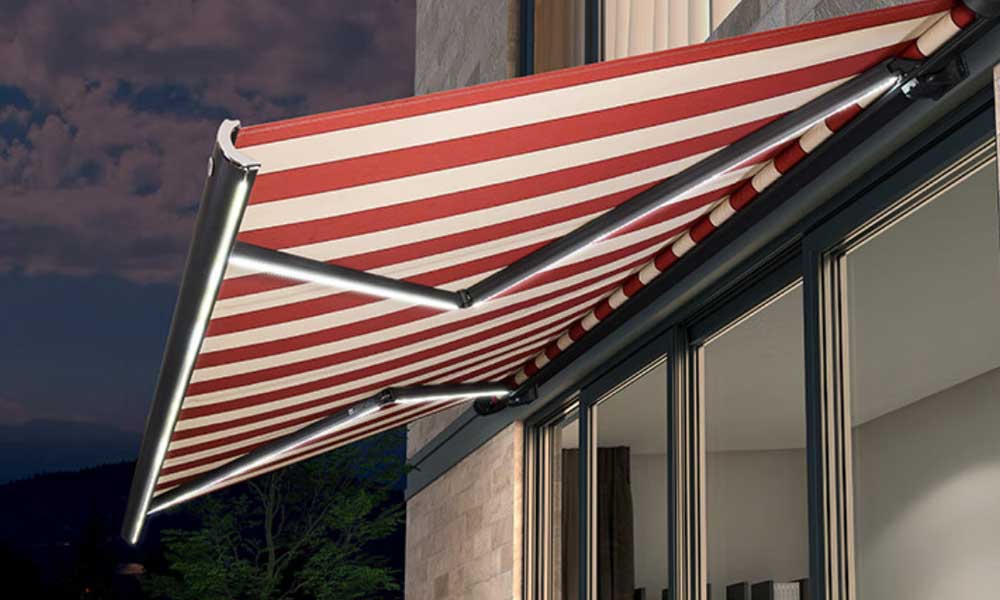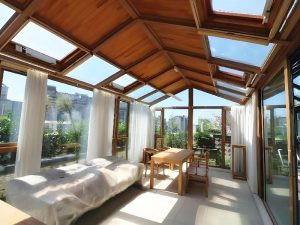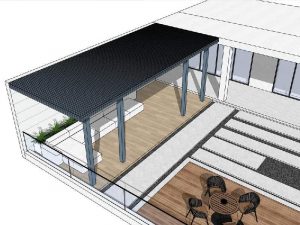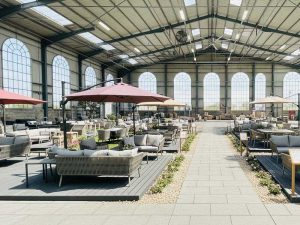Have you noticed how retractable awnings are widely used in courtyards, terraces, gardens, cafes, and commercial areas? Indeed! Retractable awnings effectively block UV rays and protect our furniture and floors from sun and rain damage.
Retractable awnings are mainly categorized into open-style, half-cassette, and full-cassette types. Due to their superior performance and durability, half-cassette and full-cassette awnings are becoming increasingly popular. This article, guided by the expertise of our Lida Outdoor Awning product specialists, will provide valuable insights into the differences between half-cassette and full-cassette awnings to help you make an informed decision.
What is a Half Cassette Awning?
From appearance alone, we can easily distinguish a half-cassette awning from a full-cassette one. When retracted, a half-cassette awning still shows part of the fabric, not counting the valance. Looking at the images, you can see the fabric roller or fabric at the joint between the front bar and the cassette. If you can’t see all the fabric but it’s not completely exposed, that’s a half-cassette awning.
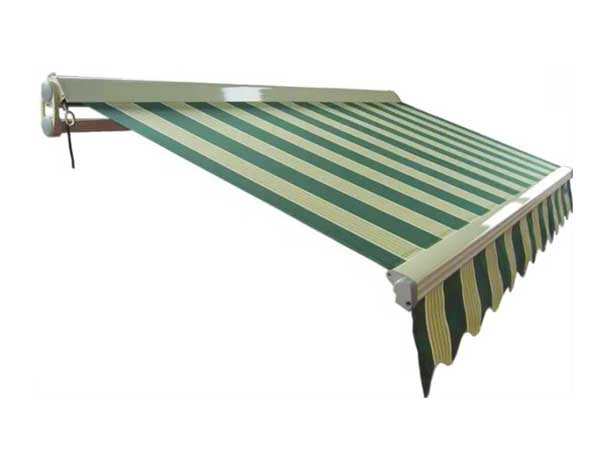
Advantages:
- Cost-Effective: Typically less expensive than full cassette awnings due to simpler design and fewer materials.
- Partial Protection: Offers decent protection for the fabric and arms from the elements.
- Aesthetic Options: Often available with a valance, adding a decorative touch.
Disadvantages:
- Partial Exposure: Some parts of the fabric and arms are exposed to weather, reducing durability compared to full cassette awnings.
- Maintenance: Requires more frequent cleaning and maintenance due to exposed parts.
What is a Full Cassette Awning?
When retracted, a full cassette awning shows no fabric at all. The arms and fabric are housed within the cassette, forming a complete unit with the front bar and cassette. Overall, it looks very smooth and aesthetically pleasing.
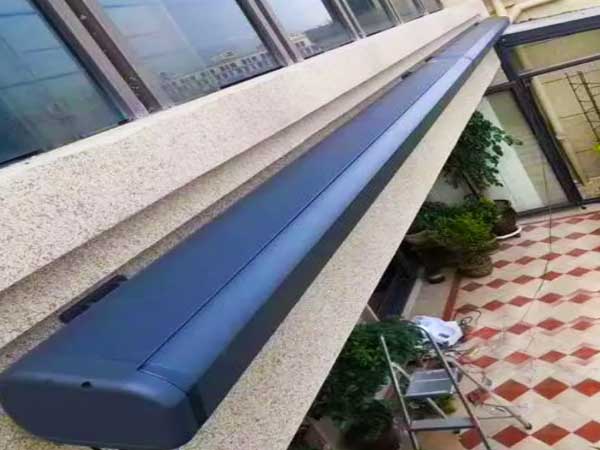
Advantages:
- Complete Protection: Fully encloses the fabric and arms, protecting them from the elements and extending their lifespan.
- Low Maintenance: Less frequent cleaning and maintenance are required due to complete enclosure.
- Sleek Design: Provides a clean and streamlined appearance when retracted, without any visible fabric.
Disadvantages:
- Higher Cost: More expensive than half cassette awnings due to the complex design and additional materials.
- Installation Complexity: More complex installation process compared to half cassette awnings.
Comparison Table: Half Cassette vs. Full Cassette Awnings
To help you quickly understand the differences between these two types of awning, here we made this comparison table:
| Comparison Item | Half Cassette Awning | Full Cassette Awning |
| Max Size | 6*3.5 meters | 6*3.5 meters |
| Valance | Optional, usually wavy or flat | Optional, but recommended without |
| Structure | Partially exposed fabric, visible at a joint | Fully enclosed fabric, unified appearance |
| Price | Medium, more than open style, less than full cassette | High, especially with gas struts |
| Fabric Durability | Medium needs maintenance for exposed parts | High, fully protected from elements |
| Aesthetic | Visible fabric when retracted | Completely covered, clean look |
| Installation | Moderately difficult | More complex |
| Maintenance | Regular cleaning of exposed fabric | Easy, less frequent cleaning |
| Use Scenario | Regular households and commercial areas need some protection | Luxury villas and commercial areas emphasize aesthetics and durability |
Detailed Comparison of Half Cassette and Full Cassette Awnings
1. Price Comparison
Assuming they use the same materials, half-cassette awnings are structurally simpler, use fewer materials, and are easier to manufacture, making them less expensive. On the other hand, full cassette awnings have a more complex design, use more materials, and offer better protection, leading to higher production costs and, thus, higher prices.

Newer full cassette awnings with gas struts are even more aesthetically pleasing and practical, but they come with increased manufacturing and installation costs, making them the most expensive model among full cassette awnings.
2. Durability of Fabric
Full cassette awnings are more durable than half if used under the same conditions. The cassette completely encloses the arms and fabric, protecting them from the elements and reducing corrosion from rain, thus increasing their lifespan. Additionally, the fabric of a full cassette awning is less likely to fade unevenly.
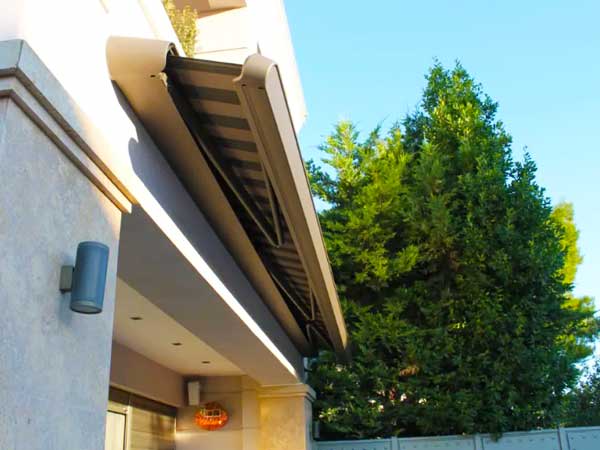
In comparison, while half-cassette awnings are more durable than open-style awnings, they are not as durable as full-cassette awnings. The cassette-only partially covers the fabric and arms, so the exposed parts are still subject to the elements, although less so than open-style awnings.
3. Aesthetic Comparison
When retracted, half cassette awnings show part of the fabric and the valance, while full cassette awnings usually do not have a valance and do not show any fabric. If you prefer a clean, streamlined look, you might find the valance-free full cassette more attractive; if you like the romantic style of a valance, you might prefer the half cassette. Choose based on your personal preference and needs.
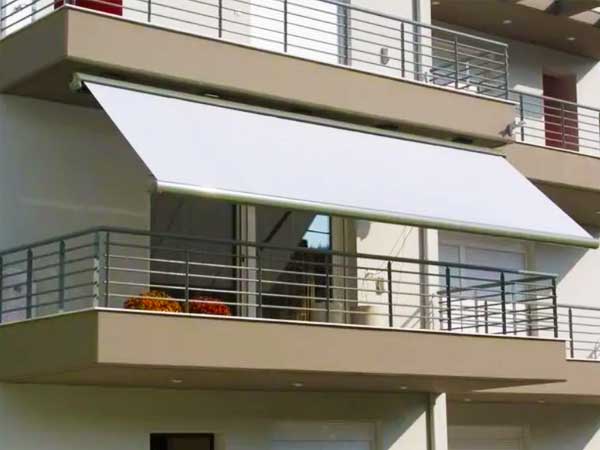
4. Maintenance Difficulty
Since part of the fabric of a half cassette awning is exposed, you need to clean the exposed part regularly. In contrast, full cassette awnings fully enclose the fabric, requiring less frequent cleaning and easier maintenance.
Tip: How to Clean Half Cassette and Full Cassette Awnings?
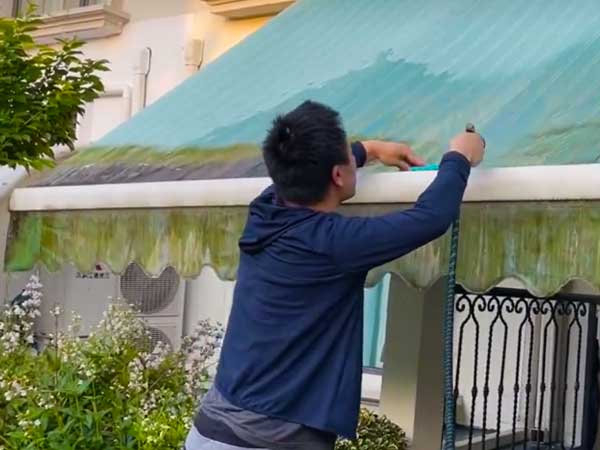
Whether you choose a half-cassette or full-cassette awning, they will eventually get dirty and need cleaning. Here are five tips for cleaning awnings that may help you:
- Before cleaning, ensure the awning is fully opened and the fabric is dry. If your awning has an automatic controller, turn off the power and close the automatic control system.
- Do not lean entirely on the awning or apply heavy pressure while cleaning to avoid damage.
- Use a soft brush regularly to remove dust, twigs, leaves, and bird droppings from the fabric. Use a pressure washer with a lower setting to wash away stains if necessary.
- If stains cannot be removed with water, use a soft brush with a small amount of regular detergent to scrub gently, then rinse thoroughly with water until the detergent is completely washed off.
- After cleaning, ensure the fabric is fully dried before retracting it to prevent mildew and odors.
Conclusion
The above comparative analysis shows that half-cassette and full-cassette awnings have design, price, durability, aesthetics, and maintenance advantages. Full cassette awnings offer better protection and higher durability, making them suitable for users with high aesthetic and longevity requirements. Half cassette awnings, being more affordable, are ideal for those seeking cost-effectiveness. We hope this article helps you understand these two types of awnings better and provides valuable reference information for choosing the right awning.

